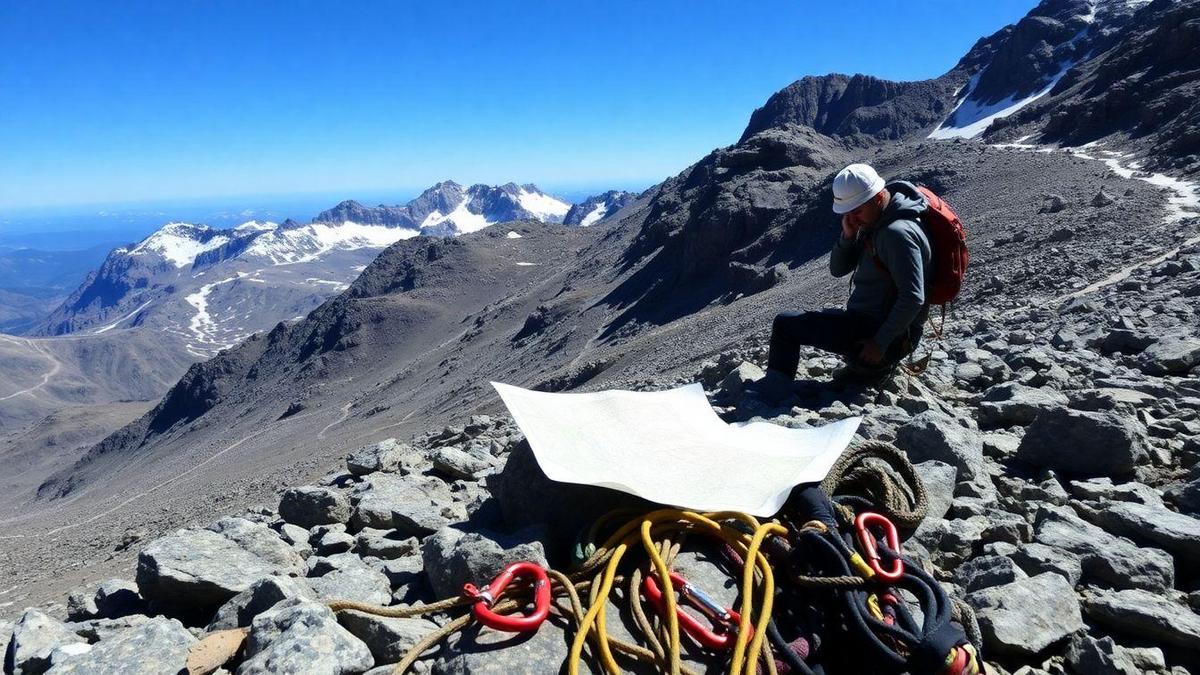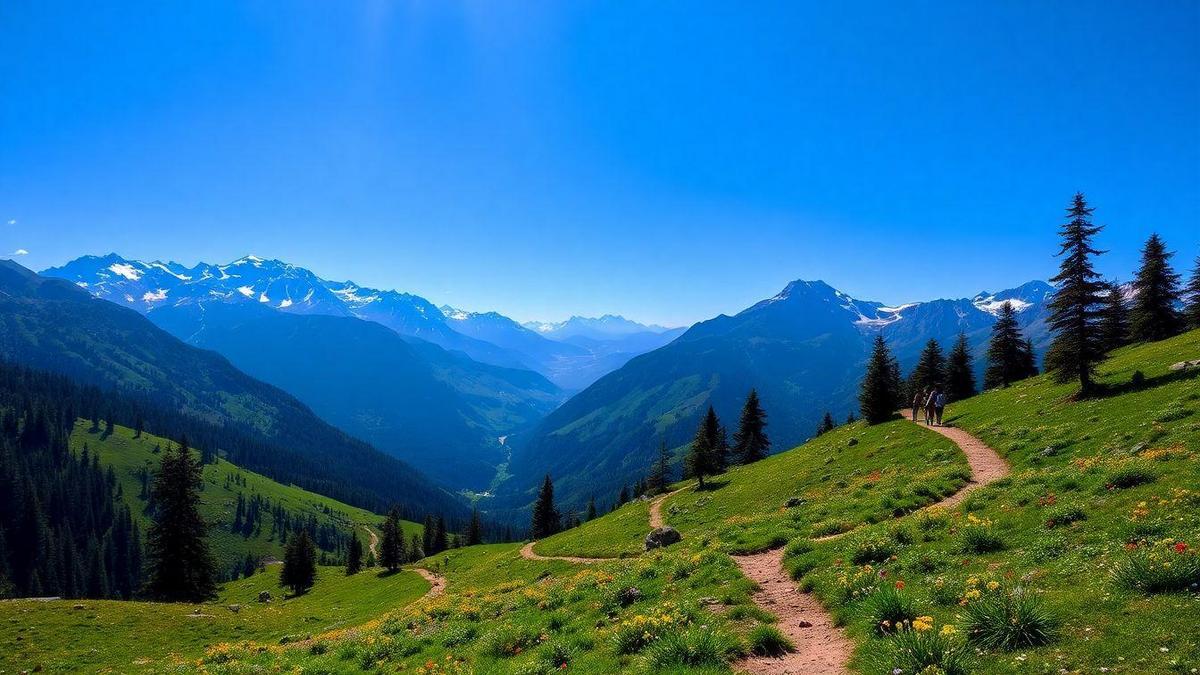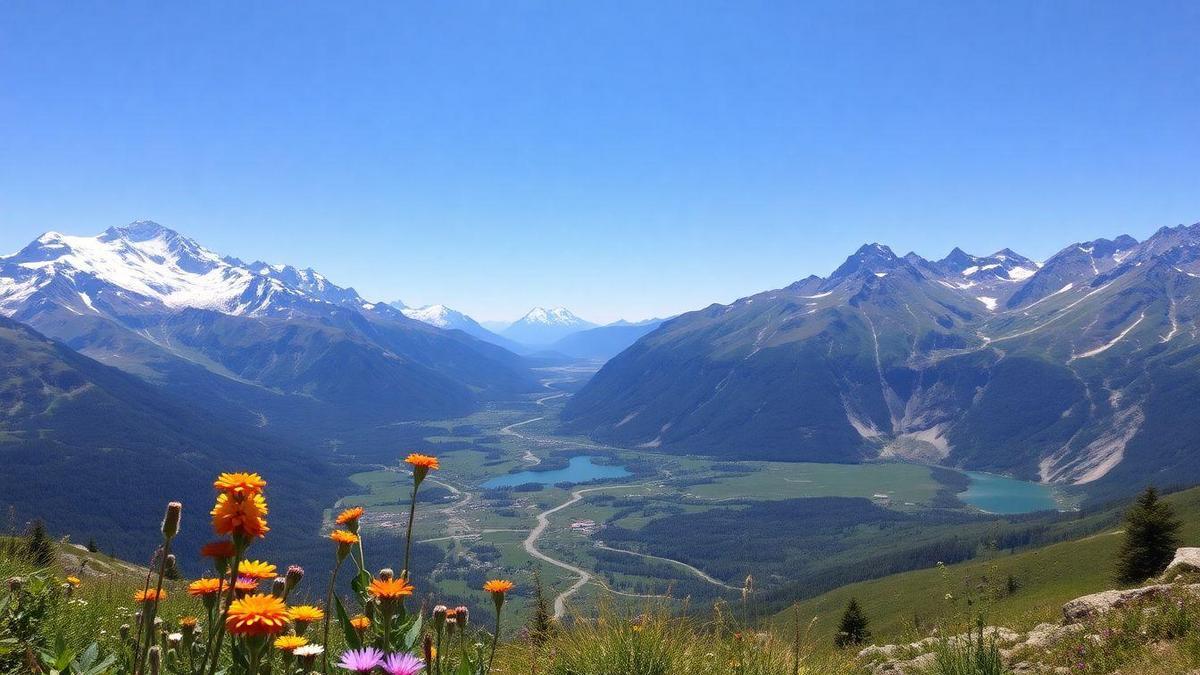
Understanding Important Maps for Mountain Climbing
The Role of Topographic Maps in Climbing
When you’re gearing up for a mountain climb, topographic maps are your best friends. These maps show the shape of the land—like hills, valleys, and slopes. They use lines called contours to represent elevation. The closer the lines are, the steeper the terrain, helping you understand what to expect on your journey.
For example, if you see a series of tightly packed lines, you know you’ll face a challenging climb. Conversely, widely spaced lines indicate a more gradual slope. Knowing this can help you prepare your body and gear for what’s ahead.
How to Read Mountain Climbing Maps
Reading a mountain map might seem tricky at first, but it’s easier than you think. Here’s how to break it down:
- Familiarize Yourself with Symbols: Every map has symbols for trails, water sources, and campsites. Make sure to check the map’s legend.
- Look at the Scale: The scale tells you how distances on the map relate to real life. For instance, if 1 inch on the map equals 1 mile in reality, you can plan your route better.
- Identify Landmarks: Use landmarks like peaks, rivers, or roads to help you navigate. They can serve as reference points during your climb.
Essential Map Reading Skills for Safety
Being able to read a map is crucial for your safety. Here are some essential skills you should practice:
| Skill | Description |
|---|---|
| Orienting the Map | Always align your map with the direction you are facing. |
| Understanding Contours | Learn how to interpret contour lines to gauge the steepness of the terrain. |
| Identifying Trails | Know which trails are marked and their difficulty levels. |
These skills will help you stay on track and avoid getting lost. Remember, a little preparation goes a long way in keeping you safe on your climb.
Navigation Precautions for Climbing
Key Navigation Tools for Mountain Climbers
When you set out to climb a mountain, having the right navigation tools is essential. Here are some key items you should consider bringing along:
- Topographic Maps: These maps show elevation changes and terrain features, helping you understand the lay of the land.
- Compass: A classic tool that helps you find your direction. Pair it with a map for better accuracy.
- GPS Device: This gadget can pinpoint your location and guide you along the trail.
Importance of GPS for Mountain Climbing
In today’s world, a GPS device is a game-changer. It can be the difference between a smooth climb and a confusing journey. With a GPS, you can track your route and avoid getting lost in the wild.
Using GPS Effectively in the Wilderness
To get the most out of your GPS, follow these tips:
- Pre-Plan Your Route: Before you hit the trail, map out your journey. Save waypoints in your GPS.
- Stay Charged: Make sure your GPS device is fully charged. Bring extra batteries or a portable charger.
- Know How to Read It: Familiarize yourself with the device. Know how to input coordinates and interpret the data.
- Back-Up: Don’t rely solely on GPS. Always carry a map and compass as a backup.
Here’s a quick comparison to help you understand the tools:
| Tool | Pros | Cons |
|---|---|---|
| Topographic Maps | Detailed terrain info | Can be hard to read |
| Compass | Simple and reliable | Requires knowledge to use |
| GPS Device | Precise and easy to use | Battery-dependent |
Planning Your Hiking Route
Steps for Effective Hiking Route Planning
When you set out to climb a mountain, planning your hiking route is as crucial as packing your gear. Here are some steps to help you plot your journey:
- Research Trails: Look for trails that fit your skill level. Websites, apps, and local hiking groups can provide valuable insights.
- Map It Out: Use important maps to chart your course. They will help you visualize the terrain and any potential obstacles.
- Check the Weather: Always look at the forecast. Weather can change quickly in the mountains, so be prepared for anything.
- Set a Timeline: Estimate how long it will take to complete your hike. Factor in breaks, meals, and the pace of your group.
Factors to Consider When Choosing a Trail
Choosing the right trail is like picking the right path in a maze. Here are some crucial factors to keep in mind:
- Skill Level: Make sure the trail matches your ability. A beginner should avoid steep or technical paths.
- Distance: Consider how far you want to hike. Longer trails can be rewarding but also more tiring.
- Elevation Gain: Look at how much climbing you’ll do. Trails with significant elevation can be more challenging.
- Scenery: Think about what you want to see. Some trails offer breathtaking views, while others take you through lush forests.
| Factor | Beginner | Intermediate | Advanced |
|---|---|---|---|
| Skill Level | Easy trails | Moderate trails | Difficult trails |
| Distance | 3-5 miles | 5-10 miles | 10 miles |
| Elevation Gain | 500 ft | 500-1500 ft | 1500 ft |
| Scenery | Forests | Mountains | Open vistas |
Tips for Successful Trail Navigation
Navigating a trail can feel overwhelming, but it doesn’t have to be. Here are some tips to help you stay on track:
- Use a Compass: A compass can guide you when the trail isn’t clear. It’s a simple tool that can make a big difference.
- Follow Trail Markers: Look for signs or painted markers. They can point you in the right direction and keep you from getting lost.
- Stay Aware of Your Surroundings: Pay attention to landmarks. They can help you remember where you’ve been and where to go next.
- Keep a Backup Map: Always have a printed map or a downloaded version on your phone. Technology can fail, but a paper map won’t.
Important maps and navigation precautions for mountain climbing are vital for a successful trip. They help you avoid getting lost and ensure you enjoy the adventure.
Safety Measures for Mountain Climbing
Essential Outdoor Safety Maps
When you set out to climb a mountain, having the right maps is crucial. These maps are your best friends in the wild. They show trails, terrain, and even water sources. Without them, you might find yourself lost in the wilderness.
- Topographic Maps: These maps show elevation changes, helping you understand how steep the climb will be.
- Trail Maps: These focus on paths, guiding you along established routes to avoid getting lost.
- Weather Maps: Always check the weather before you head out. Sudden storms can turn a fun hike into a dangerous situation. For more information on weather-related safety, see the impact of weather conditions on climbing safety.
Understanding Survival Navigation Techniques
Knowing how to navigate is key. Survival navigation techniques can save your life. Here are some basic skills to learn:
- Using a Compass: A compass can help you find your way. Learn how to read it before you hit the trail.
- Reading Landmarks: Familiarize yourself with the area. Look for mountains, rivers, or unique trees to guide you.
- Sun Position: The sun rises in the east and sets in the west. Use its position to keep your direction.
Preparing for Emergencies in the Mountains
Emergencies can happen, even to the best of us. Preparing for them can make all the difference. Here’s what you should do:
| Emergency Kit Essentials | Description |
|---|---|
| First Aid Kit | Include band-aids, antiseptic, and pain relievers. For more comprehensive information, refer to the essential first aid kits for climbers. |
| Water Purification | Carry tablets or filters to make water safe. |
| Emergency Blanket | Lightweight and can keep you warm in a pinch. |
| Flashlight | A must-have for navigating in the dark. |
Think about your situation. What would you need if things went wrong? It’s wise to pack extra food, a map, and a way to start a fire. The more prepared you are, the less likely you’ll face a crisis.
Adjusting to Altitude When Climbing
Recognizing Altitude Sickness Symptoms
When you’re climbing a mountain, pay attention to your body. Altitude sickness can sneak up on you, and it’s important to recognize the signs early. Here are some symptoms to watch for:
- Headache: A persistent headache can be one of the first signs.
- Nausea: Feeling sick to your stomach is common.
- Dizziness: You might feel lightheaded or unsteady.
- Fatigue: If you’re feeling unusually tired, take a break.
- Shortness of Breath: Struggling to catch your breath? That’s a red flag.
If you notice any of these symptoms, don’t ignore them. It’s your body’s way of saying something isn’t right. For more tips on preventing altitude sickness, check out precautions to prevent altitude sickness.
Altitude Adjustment Strategies for Climbers
Adjusting to higher altitudes is key for a safe climb. Here are some strategies to help you acclimate:
- Climb Slowly: Take your time. Gradually increase your altitude to give your body a chance to adapt.
- Stay Hydrated: Drink plenty of water. Dehydration can worsen symptoms.
- Eat Lightly: Stick to high-carb foods. They’re easier to digest and can provide energy.
- Rest: Don’t push yourself too hard. Give your body time to recover.
Here’s a simple table to help you remember these strategies:
| Strategy | Description |
|---|---|
| Climb Slowly | Increase altitude gradually |
| Stay Hydrated | Drink lots of water |
| Eat Lightly | Focus on high-carb foods |
| Rest | Take breaks to recover |
Staying Safe While Climbing at High Altitudes
Your safety is the top priority when climbing. Here are some important tips to keep in mind:
- Know Your Limits: If you start feeling unwell, don’t hesitate to descend.
- Climb with Others: There’s safety in numbers. Always have a buddy or a group.
- Use Proper Gear: Make sure you have the right equipment for the conditions.
- Stay Informed: Keep an eye on the weather and trail conditions. For more information on weather safety, see weather precautions for climbing.
By following these precautions, you can make your mountain climbing experience safer and more enjoyable.
Mastering Trail Navigation Tips
Common Trail Navigation Mistakes to Avoid
When you’re out climbing a mountain, mistakes in navigation can lead to serious trouble. Here are some common slip-ups to steer clear of:
- Ignoring Trail Markers: Sometimes, you might think you know the way and skip looking for signs. But those markers are there for a reason!
- Not Checking Your Map: Relying solely on your memory can lead you astray. Always check your map regularly.
- Underestimating the Terrain: Just because a trail looks easy doesn’t mean it is. Be prepared for sudden changes in the path.
- Climbing Without a Plan: Going in without a clear route can lead to confusion. Always have a plan before you set foot on the trail.
Using Landmarks for Better Navigation
Landmarks are your best friends in the wild. They can help you stay on track and give you a sense of where you are. Here’s how to use them:
- Familiarize Yourself with the Area: Before you hit the trail, learn about the key landmarks. This could be a big rock, a unique tree, or a mountain peak.
- Take Notes on Your Map: Mark these landmarks on your map. This way, you can easily refer to them while climbing.
- Use Landmarks as Reference Points: While climbing, keep an eye on your surroundings. If you spot a landmark you noted, you know you’re on the right path.
Practical Tips for Navigating Trails Safely
Here are some practical tips that can make your climbing experience safer and more enjoyable:
| Tip | Description |
|---|---|
| Carry a Reliable Map | Always have a physical map, even if you have a GPS. |
| Use a Compass | A compass can help you find your way when the trail isn’t clear. |
| Stay Aware of Your Surroundings | Regularly check your position against your map and landmarks. |
| Plan Your Return | Always know how to get back to your starting point. |
Frequently Asked Questions
What maps should I use for mountain climbing?
You should use topographic maps. They show elevation, terrain, and trails. A digital GPS map can also help.
How do I read a mountain map?
Look for the legend first. It shows symbols. Check the scale to understand distances. Practice reading before you go out.
What to do if I get lost on the mountain?
Stay calm and think. Use your map and compass. If you can’t find your way, it’s best to retrace your steps.
How can I stay safe when navigating in the mountains?
Always plan your route. Carry a map and a compass. Tell someone where you’re going. Stay aware of your surroundings.
Why are navigation precautions important for mountain climbing?
Navigation precautions help keep you safe. They prevent you from getting lost and ensure you can find your way back easily.


